Marsh Wren: Field Guide, Pictures, Habitat & Info
Last Updated on
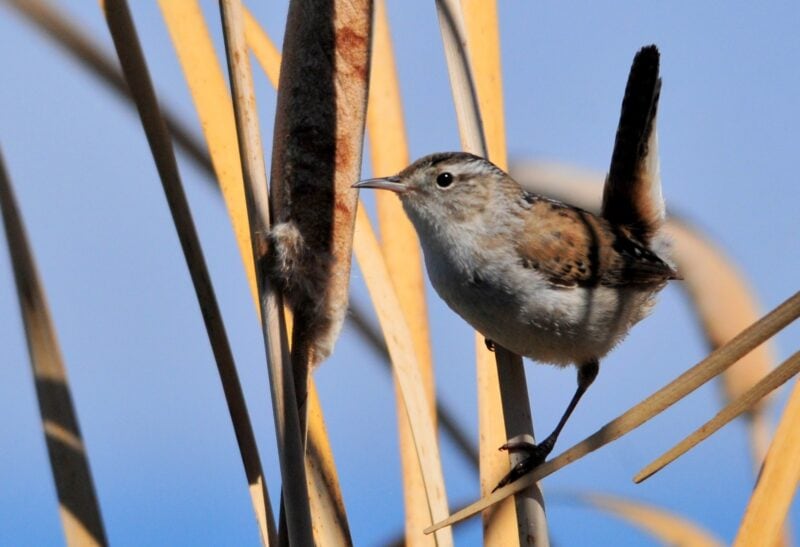
The Marsh Wren is a small songbird within the Wren family. This species can be found all throughout continental America and parts of Canada and Mexico during different parts of the season. The species was first identified in 1810. Since then, 15 subspecies have been recognized.
If you are getting into bird watching, it’s important to know how to identify the Marsh Wren. This cute little bird is similar to the Sedge Wren, which means you need to know the key distinguishing factors of this species.

Quick Facts about Marsh Wrens
| Habitat: | Marshes |
| Diet: | Insects |
| Behavior: | Ground Forager |
| Nesting: | Shrubs |
| Conservation: | Least Concern |
| Scientific name: | Cistothorus palustris |
| Lifespan: | 9 years |
Marsh Wren General Description
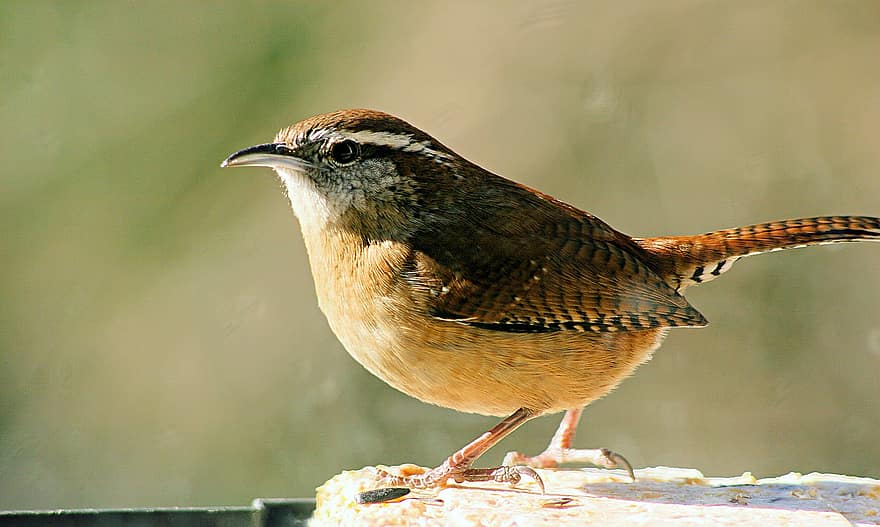
The Marsh Wren stays in wetland vegetations and marshes, after which it is named. This bird likes to sit with its tail cocked and legs flayed open. Often, each foot will wrap around a different vegetation stalk.
The bird itself has a rusty brown color with black and white streaks that run down its back. The eyebrow is white. Like other wrens, this species is small. Size-wise, it is smaller than a Robin but larger than a Chickadee. There is no sexual dimorphism to separate a male from a female.
Marsh Wren Range, Habitat, Behavior, Diet & Nesting
The range of the Marsh Wren is long, but the habitat is specific. As such, you can anticipate where Marsh Wrens will be located and how they will act based on the time of year.
Range
Marsh Wrens can be found as low as Mexico and as high as Canada. In the continental United States, Marsh Wrens are found everywhere. That being said, they aren’t found everywhere year round.
This species is only found year-round in select locations, such as in parts of Washington, Oregon, Nevada, Virginia, North Carolina, and South Carolina. They breed further up north and do not breed at all in southern states like Texas and Mexico. In the middle-United States, you are most likely to see Marsh Wrens during migration.
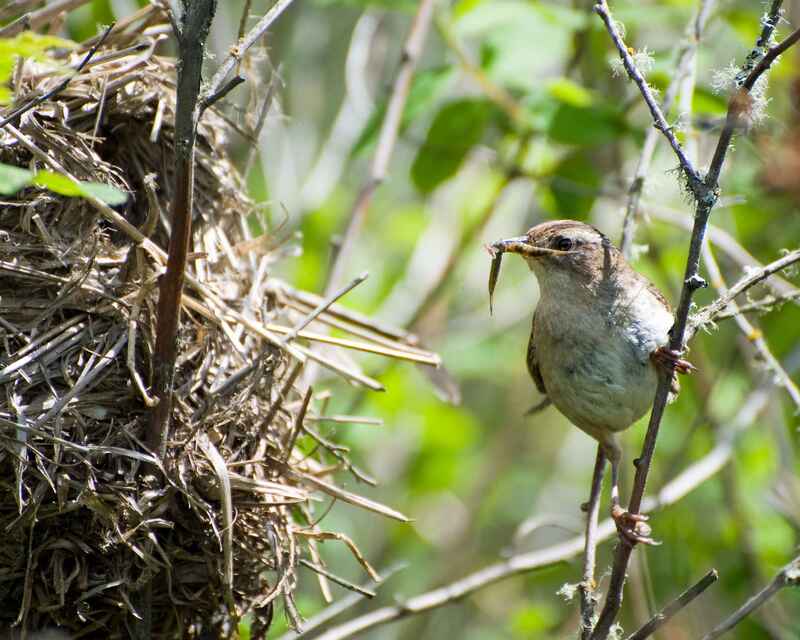
Habitat
Marsh Wrens may be spotted all around North America at one point or another, but they stick to the same habitat. They prefer marches, which explains their name. They can be found in brackish, bulrush, or cattail marshes.
While breeding, they prefer fresh and brackish marshes, but they will settle for shallow waters. During the winter, they will stay in a wider range of marsh areas, including saltwater marshes, edges of ponds, and even irrigation ditches.
Behavior
Marsh Wrens are avid foragers. They prefer to forage in dense, low growth. They pick insects off of stems of plants or right off the ground. Oftentimes, they will even forage for insects sitting on the surface water.
Less commonly, Marsh Wrens will make short flights so that they can catch any flying insects in the air. This is a beautiful sight, but it is one that is relatively rare.
Diet
The diet of the Marsh Wren is almost exclusively insects. It will eat many insects, including ants, beetles, caterpillars, flies, grasshoppers, and moths. They also eat aquatic insects, like mosquitoes, damselflies, and their larvae. The species has been known to eat spiders and snails, but they don’t eat these species as often.
Nesting
Marsh Wrens prefer to nest in shrub environments. Males are not monogamists and often have two or more mates.
The males play a huge role in the nesting process because they defend the nest through singing. Males also make dummy nests. These actions protect the nests from other Wrens, who will puncture other nests in the area
Meanwhile, the female will select a nest and finish it up by adding new lining. Sometimes, she will make a completely new nest. The nests are normally anchored on cattails or other bushes. You can find them one to three feet above the water. The nest is normally shaped like a football and has an entrance on the side. It is woven from a variety of materials, such as grass, cattails, plant down, and feathers.
Females will lay four to five eggs, though she can lay anywhere from three to six eggs at a time. These eggs are normally pale brown with some dark brown spots. Occasionally, the eggs are all white.
Incubation lasts 13–16 days. Both parents will feed the young, though females do more. The young will leave their nest 12–16 days after being hatched. Females lay two broods per year.

How to Find Marsh Wren: Birdwatching Tips
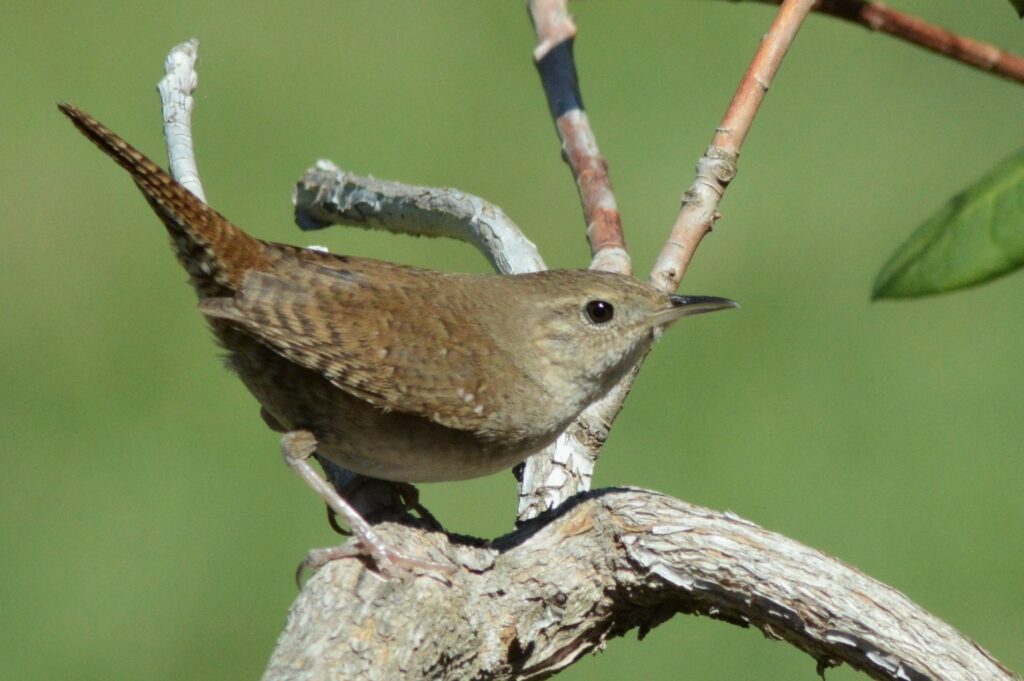
If you are interested in finding Marsh Wrens, it’s important to know what to listen for, look for, and when to look.
What to Listen For
Marsh Wrens are songbirds, which means their song is beautiful. The song is often sputtering and bubbling. Western Marsh Wrens tend to have more song types than eastern ones. So, the song will largely depend on the subspecies in your area.
What to Look For
Marsh Wrens are small, plump birds. They are mainly a rust brown color, but they have black and white striping and a white eyebrow. They have a notably vertical tail feather that extends upwards. There is no sexual dimorphism between the sexes.
Marsh Wrens are frequently confused with the Sedge Wren. These two Wrens look similar in their body. The main difference is the bill. Marsh Wrens have long bills, whereas Sedge Wrens have short bills.
When to Look
When you should look for a Marsh Wren ultimately depends on where you live.
If you live in the northern United States, you should look during the breeding season. Southern states should look during the winter season. The middle states will see these birds in passing during migration.
There are only a few states where Marsh Wrens are common year-round. You will have to have marshes in the area.
Attracting Marsh Wren to Your Backyard: Tips & Tricks
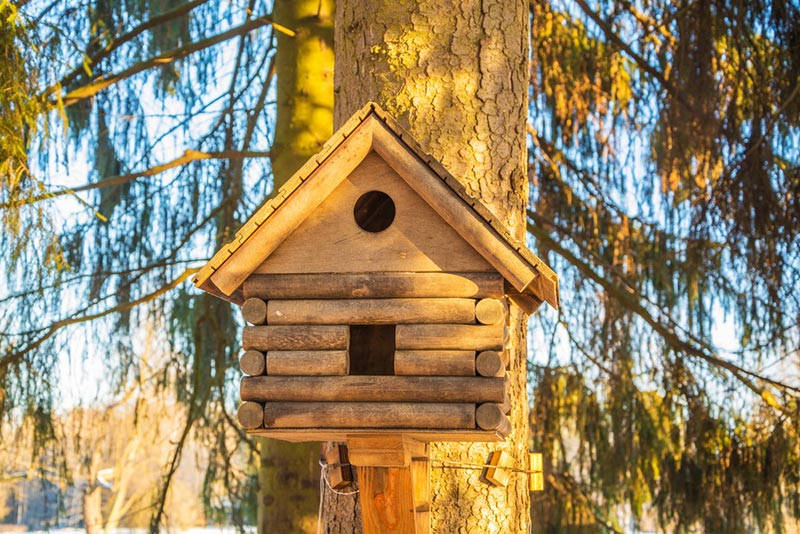
Attracting a Marsh Wren to your backyard can be a bit difficult. Because this species sticks to marshes so carefully, there will need to be freshwater sources in your area. If you have marshes surrounding your home, you can invite Marsh Wrens to eat at your home by putting up peanut butter, suet, and shelled peanuts.
Unfortunately, it will be next to impossible to attract Marsh Wrens to your backyard if there are no marshy areas around.
Marsh Wren Conservation: Is this Bird Threatened?
Marsh Wrens are considered of least concern currently. They are widespread throughout the nation.
Even so, their numbers are dwindling due to habitat loss. This habitat loss is not a huge issue yet, but it could pose a threat to the species if it continues.

Final Thoughts
If you live near marshy areas, keep your eye out for the Marsh Wren. This species is fun to watch and listen to because of their bubbling song. They’re cute, round bodies are a sight to see as well. Their bill is what will separate them from the Sedge Wren.
Featured Image Credit: Pixabay, Stockvault
About the Author Robert Sparks
Robert’s obsession with all things optical started early in life, when his optician father would bring home prototypes for Robert to play with. Nowadays, Robert is dedicated to helping others find the right optics for their needs. His hobbies include astronomy, astrophysics, and model building. Originally from Newark, NJ, he resides in Santa Fe, New Mexico, where the nighttime skies are filled with glittering stars.
Related Articles:
10 Types of Hummingbirds in Arkansas (With Pictures)
8 Types of Hummingbirds in Nebraska (With Pictures)
5 Types of Hummingbirds in Idaho (With Pictures)
3 Types of Hummingbirds in Mississippi (With Pictures)
8 Types of Hummingbirds in Kansas (With Pictures)
5 Types of Hummingbirds in West Virginia (With Pictures)
5 Types of Hummingbirds in Ohio (With Pictures)
Where Do Nuthatches Nest? Nuthatch Nesting Habits Explained
